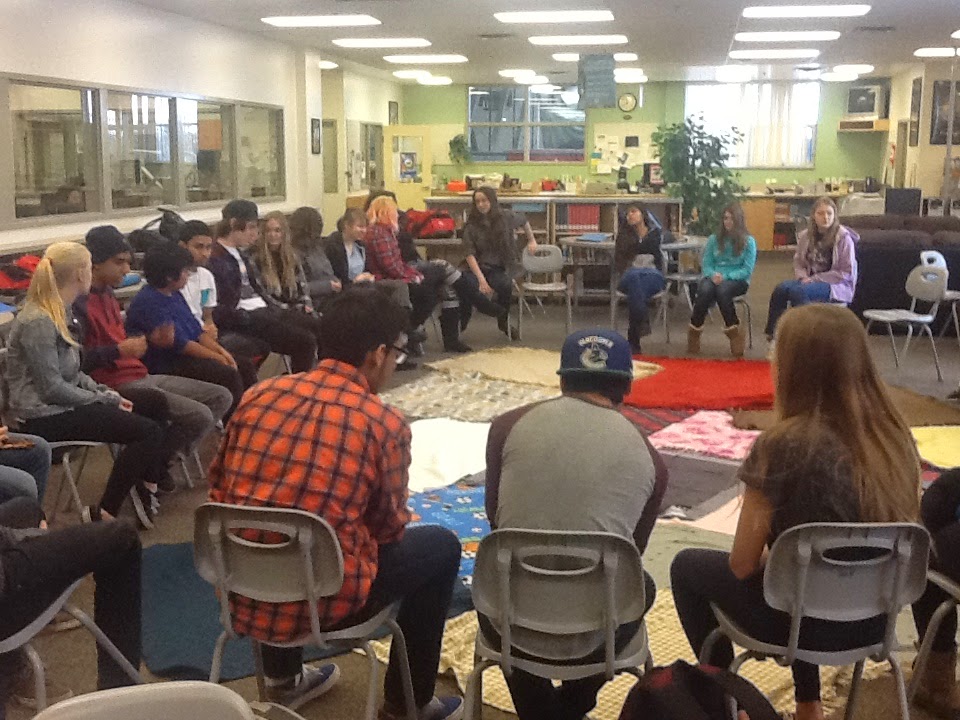Educators in British Columbia are recognizing that Indigenous perspectives are an integral part of the new curriculum. While teachers are excited by these changes, many also harbour some anxiety. How will they weave Indigenous perspectives throughout their lessons, instead of treating them as an "add-on"? How should non-Aboriginal
educators respectfully and appropriately incorporate Indigenous ways of
knowing into their practice? Students in classrooms that reflect First Peoples principles describe their learning as relevant, active, and
engaging. They become more open to diverse perspectives, develop the ability to creatively
solve problems, and enjoy a supportive community with their classmates. Students learn to see the
connections between their education and the world around them; they recognize
that the world around them is their
education!
No matter what the subject area or grade level, incorporating Indigenous ways of knowing and learning allows students
to connect more deeply with their educational experience. Here are three recommended starting points for educators who would like to increase their understanding of these perspectives:
1. The First Peoples Principles of Learning
Described as one of the founding documents of the new B.C.
curriculum, the First Peoples Principles of Learning (FPPL) were created
through a joint partnership between the Ministry of Education and the First Nations
Education Steering Committee (FNESC). The FPPL are a set of learning principles
based on general Indigenous educational perspectives and are a wonderful
framework to guide any educator hoping to learn more about First Peoples ways
of knowing.
A key companion piece to the FPPL is Jo-Anne Chrona’s website which goes into each
principle in more depth, provides context for what each might look like within
a classroom setting, and includes links to the new BC curriculum and
competencies. This comprehensive
resource also provides connections with non-Aboriginal educational theory and includes
tips for using authentic resources and avoiding appropriation.
2. Your school district Aboriginal Education Team: While
districts vary in the structure and size of their Aboriginal education programs,
members of your district’s educational team will be able to recommend
resources, connect you with members of your local community, and
guide you in ways to implement Aboriginal perspectives into
your practice.
3. FNESC (First Nations Education Steering Committee)
The FNESC website has a wealth of resources. The “First Peoples Classroom” tab provides links to authentic
resources as well as recommendations for multiple grade levels and subject
areas. FNESC also offers a variety of workshops and conferences around the
province.
It’s an exciting time for education in B.C. and a highlight is
the Indigenous perspectives now embedded throughout the K-12 curriculum. While
there will obviously be challenges that accompany any type of significant
change, these new elements will provide our children with an educational
experience that accurately reflects our dynamic and diverse 21st
century society.
Additional Resources:
Aboriginal Perspectives and Worldviews in the Classroom: Moving Forward (Ministry of Education)
Additional Resources:
Aboriginal Perspectives and Worldviews in the Classroom: Moving Forward (Ministry of Education)












